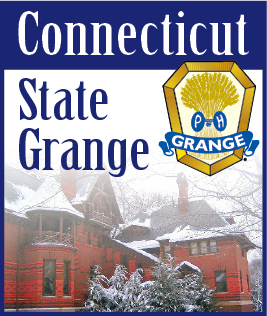| APRIL 8, 2016 -- Major portions of rural America have no access to broadband. Fewer than one in five Americans (17 percent) can’t access what the Federal Communications Commission (FCC) defines as broadband, but that level is three times higher - a whopping 53% - when it comes to rural America. And what about those parts of rural America with broadband access? According to the 2015 State of the Internet Report, the average connection speed in many rural areas is slower than those in Estonia, Uruguay, and Thailand.
That’s why the millions of us who live in rural America can muster no more than two cheers for the Lifeline Reform plan recently drafted by the FCC that shifts the focus of the federal Lifeline program to broadband. It’s a good move that makes sense in the long term, but it doesn’t have to be done with such haste that it severs the wireless Lifeline now helping millions of low-income residents in rural America.
The problem is that the FCC timetable for shifting Lifeline from a wireless focus to “broadband only” is out of sync with the reality of the availability of adequate broadband in rural America. The FCC wants to start a phase out of wireless Lifeline almost immediately and then hang up on it altogether in 2019. After that, Lifeline would only subsidize broadband and landline phone service.
That’s the wrong timetable for rural America. The FCC’s own data show that as many as 22 million rural Americans lack access to connections to broadband at download speeds of 25 megabits per second (mbps). The Commission also has reported that one in five rural Americans lacks access at the even slower speeds of 4 mbps. The access gap is even worse for people living on Native American tribal lands, where the lack of access surges to 63 percent.
While there is much to admire in the FCC’s plan for a $9.25-a-month subsidy focused over time on broadband, the truth is that it probably won’t result in one new mile of broadband cabling in rural America. All signs are that our communities of non-urban areas will lag for decades when it comes to access to essential broadband. The FCC knows this and so the unfortunate appearance is that the Commission’s current Lifeline reform plan is a calculated slight to rural concerns.
In less than 45 months the current wireless Lifeline service will vanish. For rural Americans who have no way to use a broadband subsidy, the demise of Lifeline by 2019 will mean that they are effectively cut out of the program. Their only sin: living in rural America.
To make matters even worse for those living in rural America, the FCC wants to impose minimum standards on wireless Lifeline that almost certainly would force a co-pay arrangement for subscribers. This would make participation in the program burdensome, if not completely unaffordable, for many low-income rural dwellers. Many of the poorest people with the least access to help live in rural America, these are not consumers who will be able to continue using Lifeline if they have to pony up cash that they just don’t have.
By phasing out wireless Lifeline and offering only a broadband program they can’t access, rural Americans will not be helped by Lifeline reform. Instead, will we rural Americans become the first and perhaps largest group of disconnected victims of the reforms? I ask the FCC: What good is Lifeline reform in rural America if broadband is not available now and you are killing wireless service?
Let us know if you’ve personally experienced difficulties with access to internet broadband and high speed connectivity.
*********************
Lifeline Explained:
Since 1985, the Lifeline program has provided a discount on phone service for qualifying low-income consumers to ensure that all Americans have the opportunities and security that phone service brings.
The Lifeline disciount on monthly telephone service is currently $9.25 per month for eligible low-income subscribers. Subscribers may receive a Lifeline discount on either a wireline or a wireless service, but may not receive a discount on both services at the same time. Federal rules prohibit more than one Lifeline service per household.
Use the Lifeline Eligibility Pre-Screening Tool on the Universal Service Administrative website at www.lifelinesupport.org to find out if you are eligible.
The FCC is considering a proposal from Chairman Tom Wheeler and Commissioner Mignon Clyburn to modernize the Lifeline program to provide affordable broadband for low-income Americans.
(This Lifeline information was re-printed from the FCC website and was last updated on March 14, 2016.)
|
